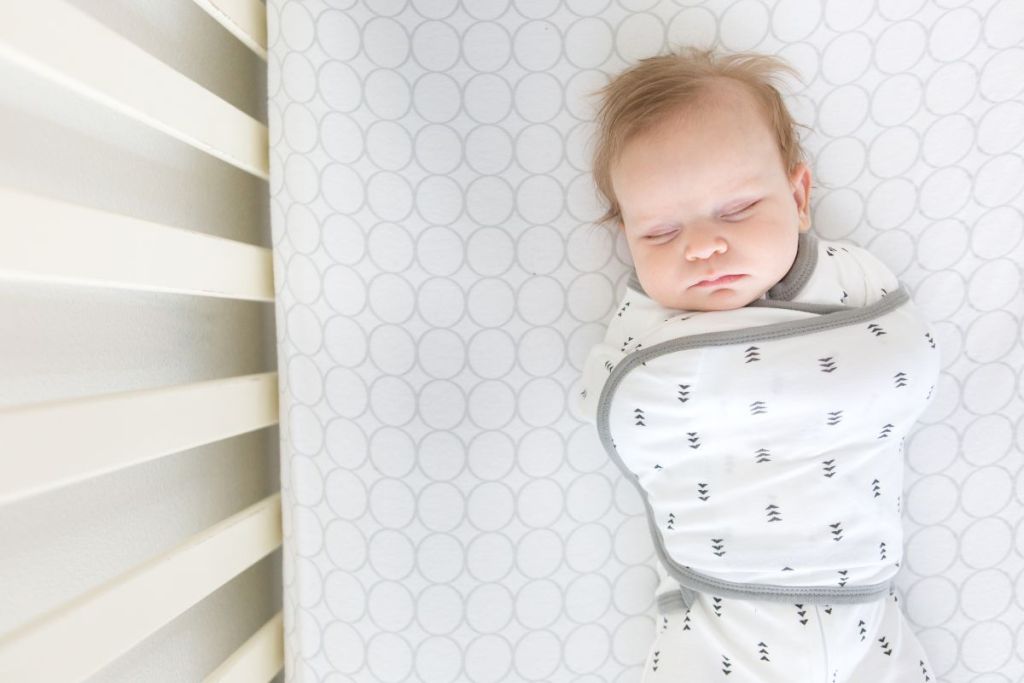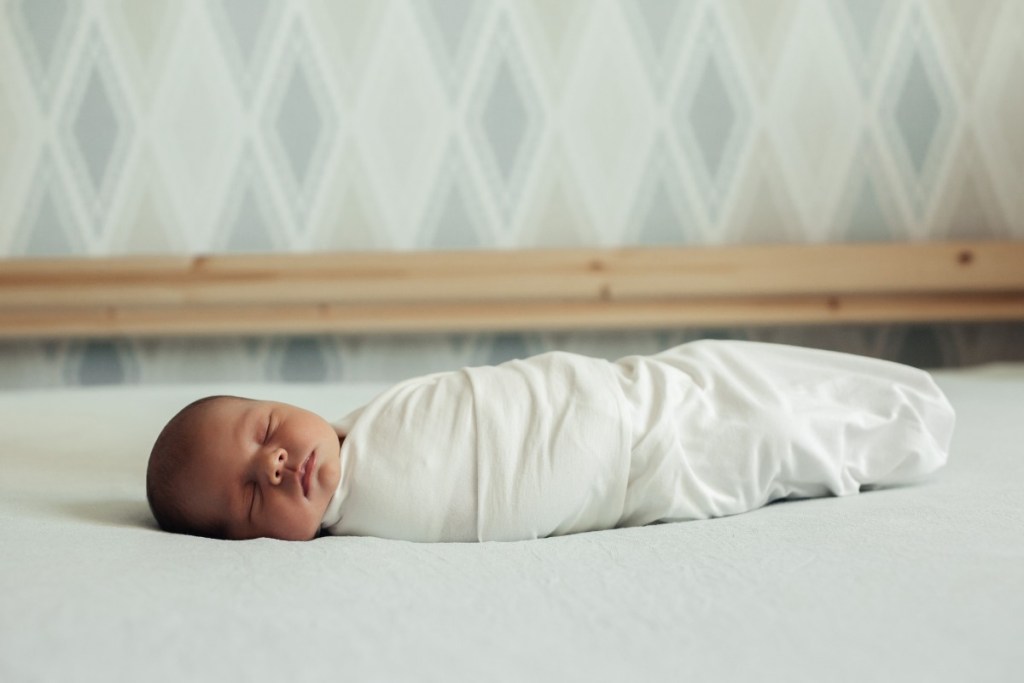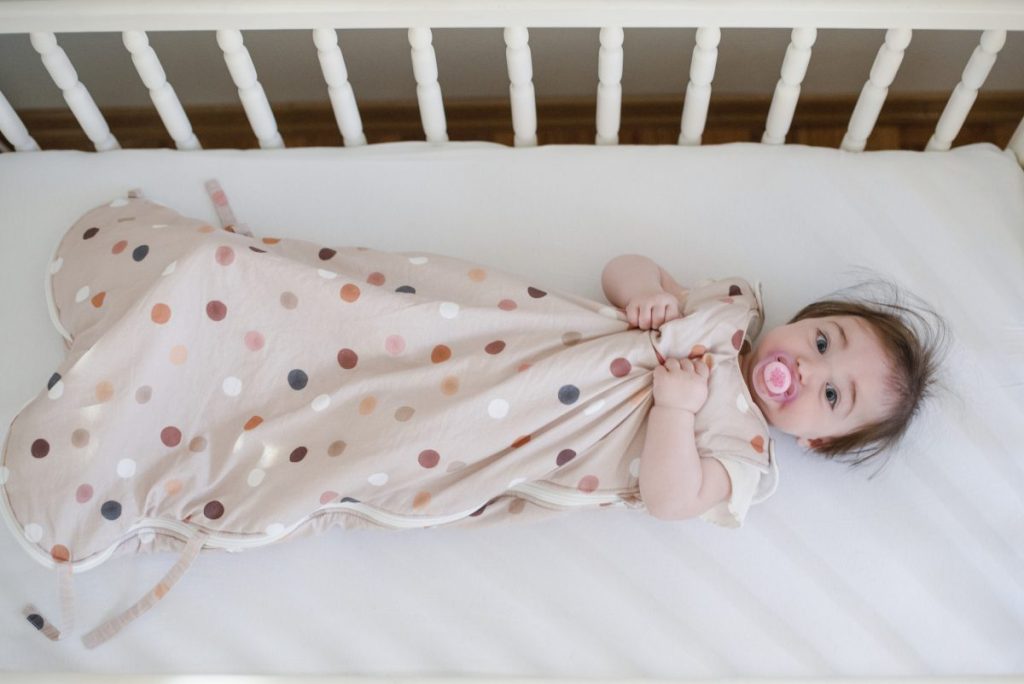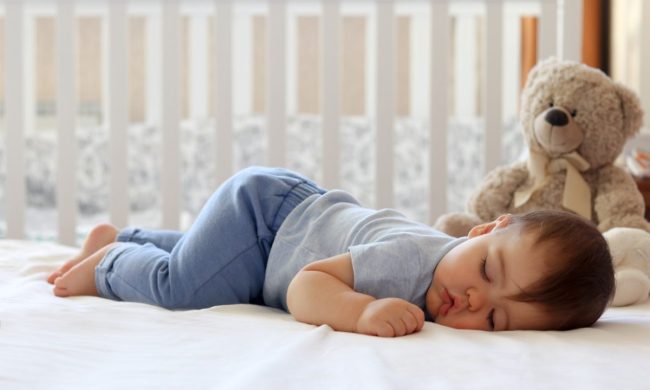
It’s important for everyone in a home with a new baby to get their beauty sleep. Or at least try to. Parents throw their favorite blanket on for a quick nap before the next feeding, and your baby might want something similar. But tiny babies can’t rest safely with a loose blanket in their crib. So, what can they sleep with to keep them safe and warm? The two main options include a sleep sack and a swaddle. So, what is a sleep sack, and what is a swaddle? They’re both wearable blankets that stay on without going over the face like a loose blanket could. Which should you snuggle your baby in for bed? We’ll look at sleep sack vs. swaddle pros and cons so you can choose the safest choice for your tiny tot.

Swaddles: Their uses, benefits, and drawbacks
Best for newborns and babies who can’t roll over yet
Swaddling is the first way babies are wrapped up right after being born. Every baby gets that same blanket for their first swaddle, and it’s always adorable. A swaddle can be a blanket wrapped tightly to form a baby burrito or a cloth product specifically made with Velcro or another adhesive to wrap the baby.
Why a swaddle?
Swaddles make an infant feel safe and sleep better. Because newborns are used to feeling pressure inside the womb, they get stressed when they are on the outside without that surrounding comfort. A swaddle gives them the feeling of being held tight.
Swaddles also prevent babies from startling themselves with the Moro reflex, which is an involuntary response to not having that cushioning around them. This startle reflex usually disappears around three to six months of age. A swaddle keeps a baby’s arms and legs secure to prevent them from flailing and waking themselves up.
When to use a swaddle
Swaddles are safe for infants until they can roll over. Once they gain this skill, even doing it just once, there is a risk of them rolling over in the swaddle and landing face-down. With their arms restricted, they wouldn’t be able to move out of that position and could suffocate. But for newborns who are unable to roll, swaddles are an excellent sleeping option.

Sleep sacks: How to use them and their advantages and disadvantages
Best for babies who aren’t coordinated enough for a blanket
A sleep sack is a wearable blanket for babies. They are a sack of fabric with three holes — one for the head and two for the arms. The body and legs of the baby stay inside a loose pouch and there is usually a zipper to get the baby in and out. Getting the correct size is the key to ensure it doesn’t slip off and become a choking hazard for your little one.
Why a sleep sack?
So, what is a sleep sack compared to a swaddle? Sleep sacks are often used as a transitional product when a baby outgrows swaddles but isn’t yet ready to use a blanket. Since it isn’t safe for a baby to have loose fabrics or items in the crib with them until they have greater control of their bodies, a sleep sack allows a baby to still feel warm and be covered.
When to use a sleep sack
Sleep sacks are best for after a baby outgrows a swaddle. They are safe at any age (including newborns) as long as they are the correct size. If a sleep sack is too big, it could slip over the face. They can be even used for toddlers.

Sleep sacks vs. swaddles: Which is the better option?
Swaddles and sleep sacks are safe to use for the right age and development
A swaddle is safe for the few months after birth until a baby can roll over. Once your little one can roll, it’s time to let the swaddle go. It’s important a swaddle is tight enough to not come loose and become a suffocation hazard. Buying a swaddle with Velcro or another mechanism for keeping it in place is best.
“Swaddling is really an art form,” says neonatologist, Dr. Michael Goodstein. “And if a parent hasn’t been taught how to do it, their baby can get out of the swaddle. This leaves a loose blanket in the crib, which is a big risk factor for sleep-related deaths.” Buying a swaddle that isn’t a normal blanket helps this issue.
Sleep sacks are better for those babies that like a little bit of comfort, but don’t want to be too snug. Your little one’s legs will be a restricted inside the sack, but their arms can still move about. If your baby is a roller, sleep sacks are safer, as their arms are free to protect their face. You can keep your little one in a sleep sack all the way until toddlerhood if they like it.

How to decide if your baby should sleep in one
We swaddle our babies or toss them in a sleep sack because the feeling of being hugged in the fabric is what baby felt like in the womb. But should you always swaddle your baby? Does a baby need to sleep in a sleep sack every night? No. Every little one is different on how they like to sleep. Some babies only sleep swaddled and some like sleep like a starfish.
You don’t have to put your child in anything but clothes to sleep in. But if you find your new bundle finds it comforting to wrapped up for bedtime, then the investment is worth it.
How many of each do you need?
You really only have to have a few of each on hand. A lightweight one for warmer months, one a bit thicker for colder months, and an extra for accidents or if you don’t want to constantly do the wash. Until you know if your babe likes to be swaddled or not, don’t go too overboard with buying one for every day of the week.
You don’t have to use one
Some babies do not want anything on them while they sleep, or they like to star fish out. You will have fun as a parent learning what your baby prefers. Whatever you use, your baby getting the proper sleep — so everyone else does — is the most important thing. For safe sleep recommendations, visit the American Academy of Pediatrics website, although they acknowledge that both swaddles and sleep sacks are safe when used correctly.
The great debate of swaddle vs. sleep sack can now be put to rest, along with your little one. Every precious bundle is different, though. One babe may love being swaddled like a burrito while another one can’t stand it. Your first baby might love being tossed in a sleep sack like a baby kangaroo and your second kiddo just wants their limbs free. So, grab one of each and adjust them according to how they get your mini to sleep the best.



